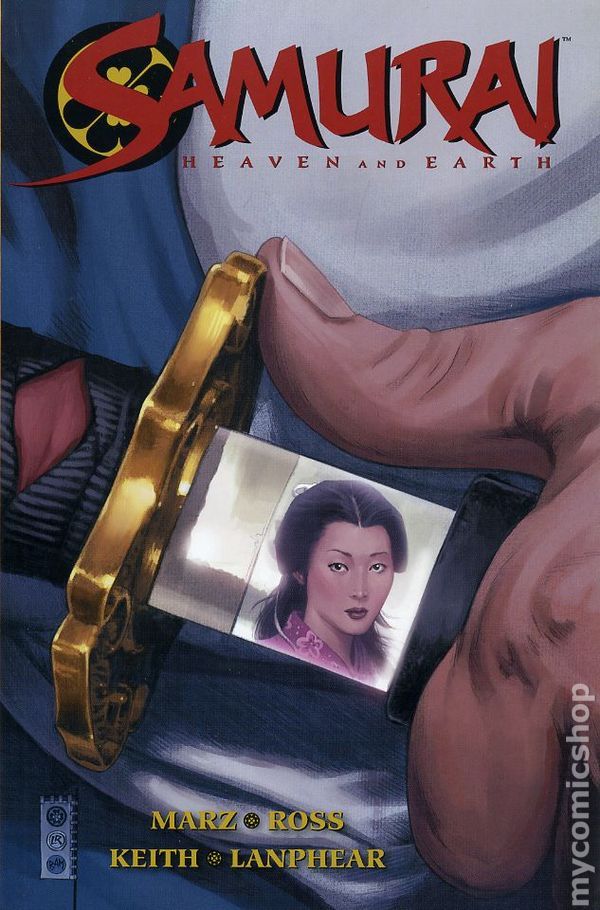Friday, March 8, 2013
Graphic Novels Challenge: Samurai: Heaven and Earth, Vol. 1
As I've mentioned a number of times, my initial inspiration for running a swashbuckling campaign wasn't The Three Musketeers or Captain Blood - it was REH's "The Shadow of the Vulture," a short story set at the siege of Vienna in 1529. "TSofV" is perhaps best known as the first - and only - appearance of Red Sonya of Rogatino, a flame-haired swashbuckler who provided the inspiration for the Roy Thomas and Barry Smith's Red Sonja character in Marvel's Conan the Barbarian, but it's only one of REH's 'Oriental' historical fiction stories.
I've been an 'Orientalist' - in the traditional, pre-Edward Said sense of the word - since I was a boy, beginning with my fascination with the Arabian Nights tales, but I didn't discover REH's stories until about eight years ago, thanks to the Bison Books collection. That led me Harold Lamb's amazing Khlit the Cossack tales, which take place across with the breadth of Central Asia, in turn. So it should be no surprise that a graphic novel about a samurai at the court of Louis XIV was right in my wheelhouse.
Collected into graphic novel form in 2006, Samurai: Heaven and Hell is the story of Shiro, the eponymous samurai, and his love, Yoshiko, who's captured by Chinese invaders in 1704 and carried away, setting in motion a series of events which lead Shiro to the Sun King's court in pursuit of his love.
The artwork by Luke Ross and Jason Keith is beautifully rendered, but Ron Marz's story is flatter than a pancake. The journey from the Chinese warlord's palace to Louis' France may as well have involved teleportation, reduced to a couple of 'we need a MONTAGE!' pages of action. The nature of Shiro's quest means that character development is nearly nil - figures come and go, often dispatched at the end of Shiro's katana, without the reader knowing, or particularly caring, who they are. Things get only marginally better once the action shifts to France, where Shiro predictably battles the King's Musketeers, 'cause, y'know, one of the purposes of this whole exercise was clearly to show how a katana-swinging samurai is a match for any number of broadsword-wielding musketeers.
Yes, the story falls into the familiar and predictable trope of venerating the cult of the samurai and his katana. While not wallowing in excess - Shiro doesn't, say, cut a carriage in half or deflect bullets with his sword, thank goodness - it's still a depressing exercise in round-eye otaku.
Shiro's quest continues in volume 2 . . . to be continued . . .
Subscribe to:
Post Comments (Atom)



captured by Chinese invaders in 1704
ReplyDeleteUmm, China did not invade Japan in 1704 or any other time.
In general, I love this kind of east-meets-west, clash-of-cultures stuff, if it's done well. I recently read C. R. Boxer's book "Fidalgos in the Far East 1550-1770" which was a great inspiration for imagining Portuguese versions of Diego Alatriste and Iñigo Balboa swashbuckling their way along the coasts of Ming China. The Portuguese of Macao sent military expeditions to help the tottering Ming Dynasty against the Tartar invaders, and were involved with pirate raids along the coasts (both on the side of the pirates and the law!)
"Umm, China did not invade Japan in 1704 or any other time."
DeleteYeah, I'll get into that when I review part two.
"I recently read C. R. Boxer's book "Fidalgos in the Far East 1550-1770" which was a great inspiration for imagining Portuguese versions of Diego Alatriste and Iñigo Balboa swashbuckling their way along the coasts of Ming China."
Wow, somebody needs to write a blog post about that (hint, hint).
That second thing sounds awesome.
Deletehaven't read the book but you wrote "captures by Chinese invaders," which is ambiguous as it could
ReplyDeletemerely mean a ship of Chinese pirates rather than an invasion in the sense of one nation trying to conquer another. how is it portrayed in the book?
Also, the Chinese have invaded Japan depending on what you count as a Chinese invasion, for instance Mongol/Chinese/Koreans together?
No, I do not count Kublai Khan's attempts to extend the Mongol conquest to Japan as a "Chinese invasion."
Delete